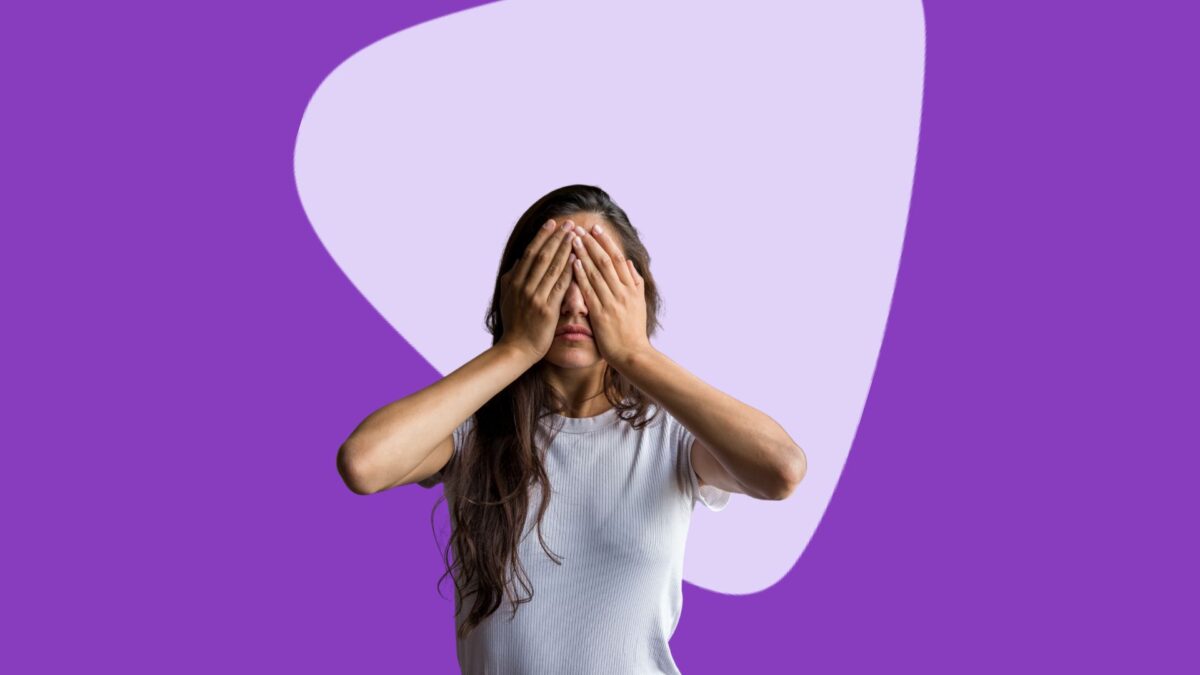Imagine yourself in this scenario… You have a difficult task ahead of you and you’re suuuper nervous to get started. It seems too daunting right now, so you put it off till later. The due date comes along, and you STILL don’t start the task until the very last possible moment…and when you do, it only takes you 25 minutes. Sound familiar? Yep, it does to us too.
Procrastination is a constant cycle of “I’ll do it tomorrow,” and then having a huge pit of shame in your stomach once tomorrow comes along because you still haven’t started. And yet, we never learn from it when it happens because we always somehow make it work! The good news is that you’re not alone! Almost everyone procrastinates in some way or another (heck, we were probably procrastinating writing this article). So, we’re going to dissect why we do it and how to beat it!
What Is Procrastination?
Procrastinating something means constantly delaying or postponing something. You can procrastinate at work, you can procrastinate at school, and in pretty much every social situation and relationship! Pretty much everyone does it once in a while, but psychologist Dr. Joseph Ferrari has found that 20% of Americans are actually chronic procrastinators — which makes it more of an actual lifestyle.
There’s a common misconception that procrastinating makes you lazy, which is defs not the case! It generally stems from feeling inadequate, thriving under pressure, or, for those chronic procrastinators, a maladaptive lifestyle. But, before we get into allll the other deets, here’s a little procrastination Ted Talk that perfectly describes what goes on in your brain when you put things off!
Types of Procrastination
There are two main types of procrastination: active and passive. You either semi-choose to procrastinate because you think you work better under pressure (which is totally valid) oooor you get sucked into a wormhole of self-doubt and indecision so you leave it to the last possible second (also valid)!
Procrastination also manifests itself in a few different ways. You may do it because something more interesting has occupied your mind, you may not have the mental capacity at this exact moment, or you feel like you have more control by putting it off (which quickly spirals out of control as soon as that deadline starts looming).
Here are some other common ways we procrastinate…
- Anxiety Procrastination: Being so anxious about doing something that you keep putting it off.
- Productive Procrastination: Working on literally anything else.
- Revenge Bedtime Procrastination: Staying up really late to get as much free time as you can.
Why Do I Procrastinate?
If you’re asking yourself why you procrastinate, rest assured that it’s not because of laziness. You didn’t choose to become a procrastinator! It’s actually because there’s an emotional battle going on inside your brain and, rather than untangling all of those conflicting feelings, you just avoid what’s causing you stress.
Now, we’re going to just take a second here to note that chronic procrastination can be a sign of a larger issue, like ADHD. If you feel like your procrastination is really impacting your life or it’s completely out of your control, we recommend you visit your family doctor. If you have a condition like ADHD then your doctor can help you come up with a game plan…like lifestyle changes, medication and different types of therapies (mental, physical, etc.).
Alright, now back to the main discussion. Whether or not you have an underlying condition, these are some of the reasons you might procrastinate.
- Fear: You’re worried that the final product won’t be perfect and that you might fail.
- Impulse Control: Things like nice weather or friends distract you from your work.
- Dismissal: You don’t like doing certain things, so you choose not to think about them.
- Rebelling: You’re being forced to do something and choose to resist it instead.
Effects of Procrastination
Procrastination is definitely not the most effective strategy for getting stuff done. Yes, you’ll likely make it just in time for the deadline, but at what cost? Along with the expected lower quality of work, procrastinators also generally face stress-induced symptoms like insomnia, a weakened immune system and stomach issues. Not very comfy, right? But we’ve got some strategies that can help you avoid procrastination (and those not-so-nice symptoms, too)!
7 Tips for Procrastination
Fighting procrastination can be very difficult, especially if you’ve gotten used to doing it for a lot of your assignments and projects. Your usual routine is likely perfectionism, procrastination and then…paralysis (panic). But we are here to help! You CAN change your mindset and break free of that cycle by following these steps.
1. Bring Your Expectations Down a Level
Striving for perfection is like kryptonite for a procrastinator (and, newsflash, nobody has ever been able to reach it!). Try to strive for “good” and “good enough” instead. We promise it’ll seem MUCH more attainable and you won’t be as nervous to get started if you don’t put that pressure on yourself. And no, it’s not a pass to submit half-assed work! But acknowledging that you can create work that IS good helps you start on a project instead of keeping it on that pedestal of “I’m gonna start when I’m ready to create a masterpiece.”
2. Keep Your Tasks Small
One of the biggest issues for procrastinators is leaving ALL the work to the last minute. Your best bet is to do at least half an hour of work a day, get that out of the way, and THEN enjoy yourself. That way, you’ll have bite-sized tasks that are a bit easier to digest, rather than a five-course meal that will take up all of your energy and more than likely make you a little uncomfortable.
3. Stick to a Schedule
If you want to work on small bits of your project each day, you’ll also want to create some sort of schedule for yourself. Whether it’s a calendar, a journal, or sticky notes on your computer, it’ll remind you to get that shit done today — because it can be SO easy to lose track of the hours in a day.
4. Have a Support System
Try to make sure you’ve got someone to help you. Whether it’s a coworker, a parent or a sibling, just find someone that can check in on you every once in a while. It’ll keep you in line and make it a bit more difficult to stray off your path.
5. Learn to Say ‘No’
Now, of course, you sometimes don’t have a choice when it comes to deadlines for school and work. But if you’ve already got waaay too much on your plate because you took on a buffet of responsibilities, don’t say yes to more! The more you take on, the more overwhelmed you’re gonna be, and that’s most likely gonna lead to (you guessed it) more procrastination. Remember that you’re your own best advocate and identifying how much you can handle is something only you can really do.
6. Incorporate a Reward System
Whether it’s using gummy bears to reward yourself for reading each chapter or 30 minutes of TV per 1 hour of work, a reward system can be super motivating! It turns the work into a bit of a game and makes it less daunting when you’re amping yourself up to start working.
7. Practise Mindfulness
Breaking the procrastination cycle can be a bit hard on your mind at first. So, just make sure you listen to your body and give it what it needs (unless it’s screaming at you to abandon the project). Instead, maybe go out for a quick walk or take intermittent breaks! The fresh air and small intermission will give you some time to relax and refresh your brain for before you get back into your work.
If these tips don’t help you learn how to avoid procrastination, we recommend seeing a mental health professional. They will be able to set you on a psychotherapy plan to help you beat the procrastination situation in your brain! Now, go forth and do stuff!












